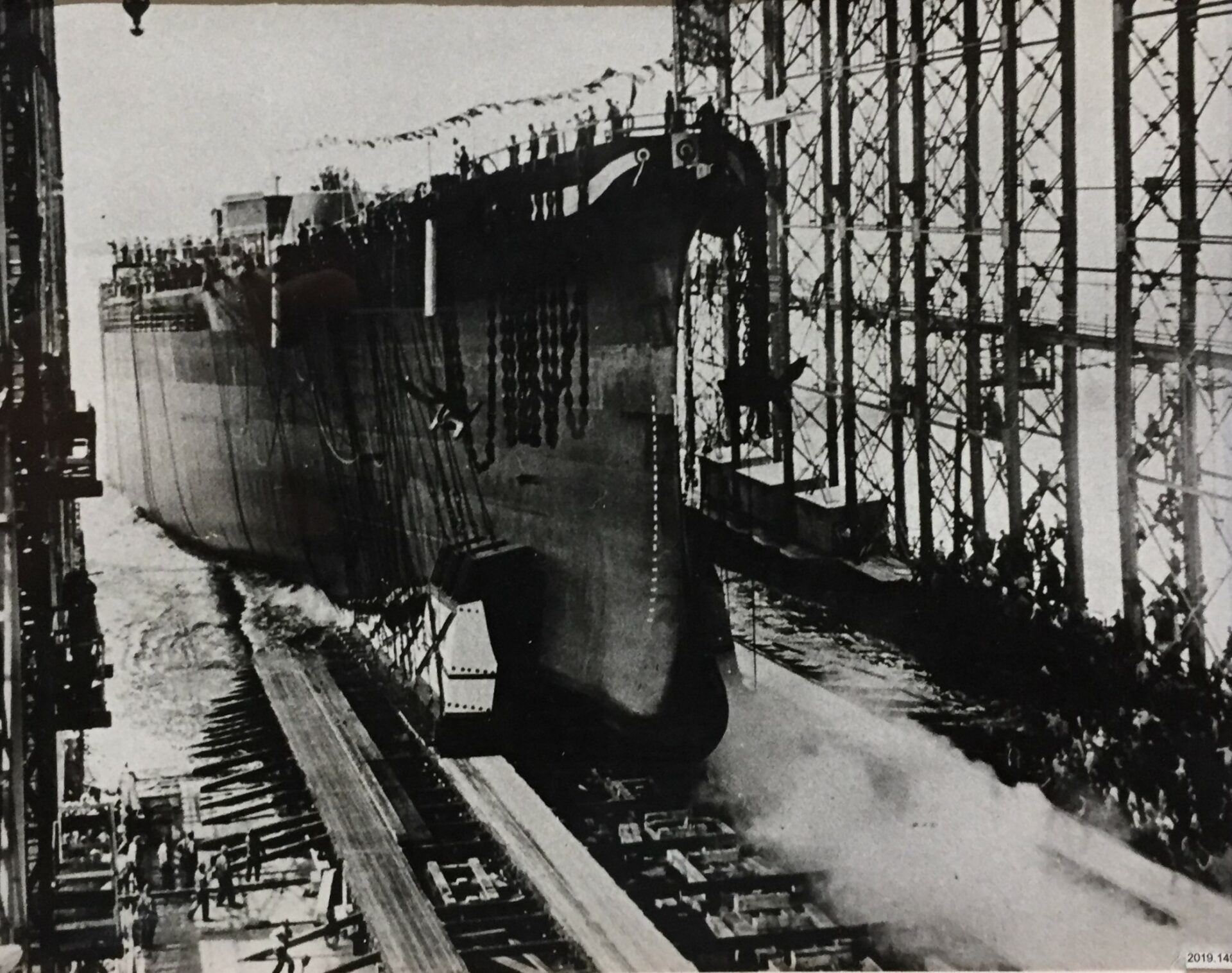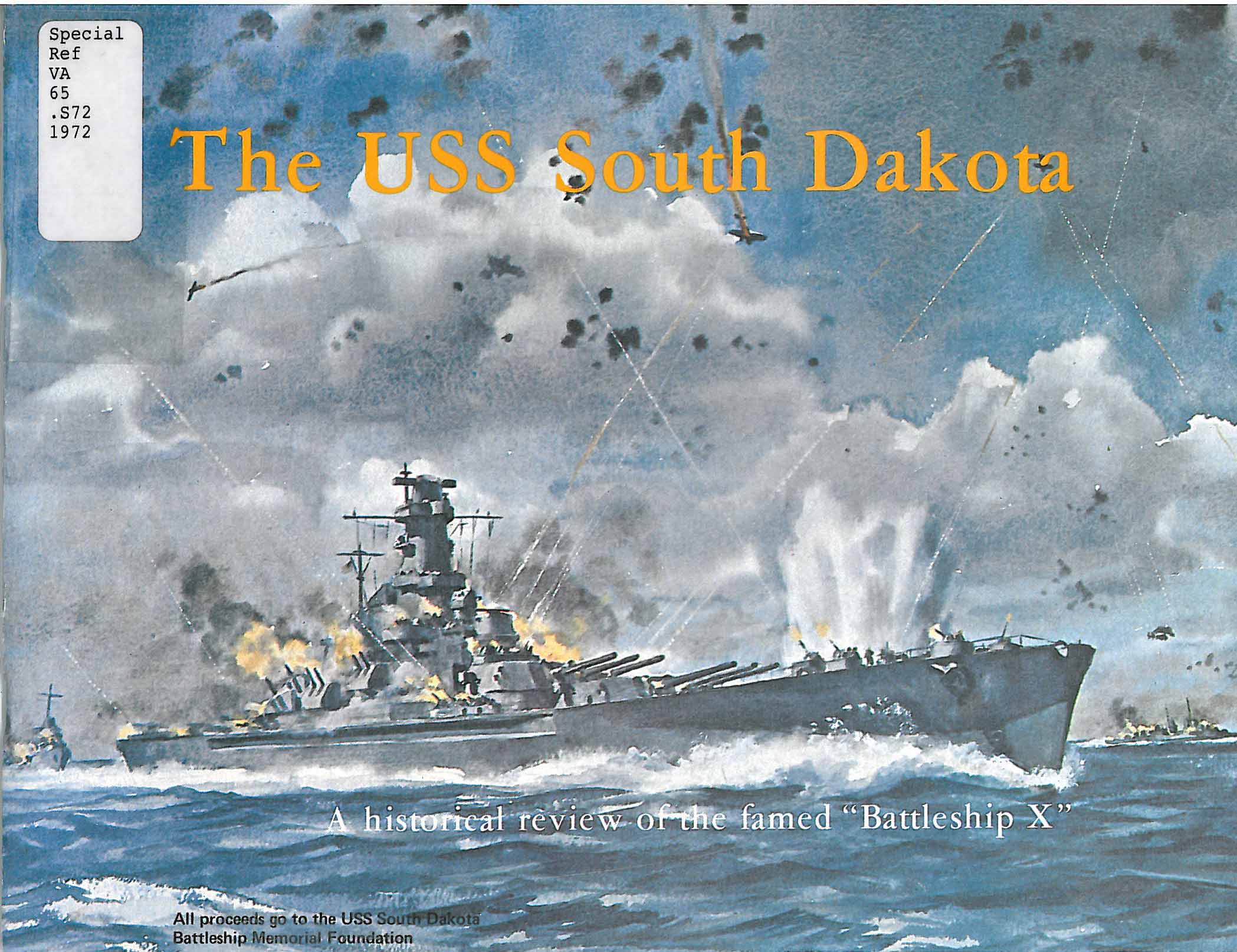Battleship South Dakota - File: USS South Dakota (BB-57) and two destroyers USS Prometheus (AR-3), November 1942 (80-G-36088).jpg
Size of this preview: 800 × 600 pixels. Other resolution: 320 × 240 pixels | 640×480 pixels | 1, 024 × 768 pixels | 1, 280 × 960 pixels | 2, 560 × 1, 920 pixels | 5,014 × 3,760 pixels.
Battleship South Dakota

English: USS Navy battleship USS South Dakota (BB-57) and two destroyers with repair ship USS Prometheus (AR-3) under repair, possibly in Noumea, New Caledonia, November 1942. possibly USS Mahan (DD-364), which was damaged in a collision with South Dakota at the end of the Battle of the Santa Cruz Islands on 27 October 1942. South Dakota was damaged in that battle and in the Battle of the Fleet. Guadalcanal on November 15, 1942. Another destroyer may be the USS Lamson (DD-367).
Photo] Uss South Dakota And Uss Alabama In The North Atlantic, 1943
Most of the images found in the NHHC collection are in the public domain and can be downloaded and used without permission or special requirements. Those not noted in the copyright section are in the NHHC image description.[1]
This file is the work of a sailor or employee of the U.S. Navy that was received or created as part of the person's official duties. As a work of the US federal government, it is in the public domain in the United States.
This file has been marked as exempt from the restrictions recognized by copyright law, including all related and related rights. This article is about the World War II battleship class. For the 1920 decommissioned battleship, see South Dakota-class battleship (1920).
The South Dakota class was a group of four fast battleships built by the United States Navy. They were the second class of warships named in the 40th state; the first was developed in the 1920s and was abolished under the terms of the Washington Naval Treaty. There were four ships in the class: South Dakota, Indiana, Massachusetts, and Alabama. They were designed for a standard displacement of 35,000 long tons (35,600 t) as the earlier North Carolina class and had the same main battery of nine 16-inch/45-caliber Mark 6 guns in three gun turrets, but were more compact and improved. The ships could be visually distinguished from earlier ships by having one hull, as opposed to the North Carolina's two hulls. According to naval historians William Hartzke and Robert Dulin, the South Dakota design was the best "battleship" ever built. .
Battleship Showdown: Uss South Dakota Versus The British 16b/38
Construction began shortly before World War II, with an allocation in fiscal year (FY) 1939. By the summer of 1942, the four ships were in service on both sides of the Atlantic, ready to hold potential German capital ships and carriers in the Pacific. groups and shore bombs. All four ships were retired shortly after World War II; In the 1960s, South Dakota and Indiana were separated, and Massachusetts and Alabama were kept as museum pieces.
Two North Carolina-class battleships had previously been assigned to the FY 1937 construction program, and in 1936 the General Council met to discuss two battleships to be allocated for FY 1938. The General Council argued for two more North Carolinas, but Chief of Naval Operations Admiral William H. Standley wanted the ships to be of a new design. This meant that construction could not begin until 1938, so the ships were assigned to FY 1939. Design work began in March 1937, and the designs for the two warships were officially approved by the Secretary of the Navy on 23 June. The exact specifications of the two ships were decided and accepted on January 4, 1938. The ships were officially commissioned on April 4, 1938.
Due to the deteriorating international situation in Europe and Asia, Congress authorized two more warships of the new design, for a total of four, under the deficit authorization of June 25, 1938. The "Escalator Clause" was the second Treaty of London Fleet. was. The U.S. Navy was commissioned to begin work on a series of Iowa battleships, but Congress was unwilling to approve only 35,000-ton battleships.

Several deficiencies in North Carolina were previously addressed in South Dakota; These include inadequate underwater protection and turbine engines of suboptimal technology.
Us South Dakota Class Battleship
The North Carolinas also did not have enough space to serve as flagships of the fleet, so the flagship of the new class was designed specifically for this purpose with a deck in addition to the conning tower, although the increase in space and weight necessitated this elimination. two 5-inch dual-purpose (DP) gun mounts.
There has been much debate about the requirements for new warships. The Planning Board developed several recommendations; one called for the ship to carry nine 16-inch (406 mm) guns with three triple turrets, 5.9-inch (150 mm) thick deck armor protecting the ship from gunfire up to 30,000 yards (27,000 m), and at least 23 knots (43 km/h h; 26 mph) speed. Belt armor was a much more intractable problem; The 16-inch gun could penetrate 13.5 inches (340 mm) of plate, the thickest on an American warship at the time, even at 25,000 yd (23,000 m). To test the ship against its own armor – a feature known as "balanced armor" – the main belt would have to be increased to 15.5 inches (390 mm), which would increase the ship's weight to prohibitive levels. To reduce this problem, sloped armor was proposed; uniform armor could not be used on the outer belt as it would increase stability to dangerous levels. Instead, an internal armor belt was placed behind the unarmored projectile plates. However, this had significant drawbacks; this complicated the construction process, and if the armor belt was damaged, the outer coating had to be cut away first before the belt could be repaired.
To reduce the disadvantages of the tilt belt, he left the box and returned to the gun deck. This meant that shells fired at very close range would hit the upper part of the belt at an angle, increasing the armor protection. However, the effectiveness of the upper section of the belt is compromised at longer ranges, as the fire is angled closer to the section, increasing the chance of turning the weapon. It reduced the area the armor deck had to cover, which saved additional weight. This made it possible to thicken the upper belt, which made it less vulnerable to fire.
Because the belt was inside, it allowed the double bottom to extend to the inside, giving the boat better underwater protection than the North Carolina. Eventually, the more complex double inclined belt armor was abandoned when it was found that a single inclined belt could provide similar protection and save hundreds of tons of weight.
U.s.s. South Dakota Battleship Memorial
Projectile size was also a problem: a longer projectile equals higher velocity, but requires more armor to protect it. High performance machines are required to maintain high speed in a short body. Because the South Dakota design was much shorter than the earlier North Carolina—680 feet (207.3 m) compared to 729 feet (222.2 m), respectively—the new ships required better techniques than those used in shorter hulls. keep the same distance with long vessels. The design originally called for a top speed of at least 22.5 knots (41.7 km/h; 25.9 mph), which was considered sufficient to keep up with surfaced opposing battleships and submarines. However, in late 1936, cryptanalysts deciphered Japanese naval radio traffic, revealing that the battleship Nagato was capable of speeds in excess of 26 knots (48 km/h).
To counter this, if the North Carolina power plant could be reduced enough to enter a hard highway, 25.8–26.2 km (47.8–48.5 km/h; 29.7–30.2 mph ) speed can be reached. South Dakota. To accomplish this, the boilers were placed directly above the turbines in the manner used in the 1916 Lexington-class battleships. The boilers were rearranged several times so that they were surrounded by the turbines, and eventually they were located right next to the turbines. The conveying system was placed as close as possible, and the evaporators and injection equipment were placed in the engine rooms. This gave extra space behind the armor belt to add a second story room.
So far, the design process has determined that the hull should be 666 ft (203 m) long between perpendiculars and include a single armor belt with an internal slope. However, in case the General Council refused, naval architects developed a number of alternatives. These included longer, faster ships with 14-inch guns in three turrets, slower ships with 14-inch guns in four turrets, improved versions of the North Carolina class, and 27-knot (50 km/h) ships with armor. nine 16-inch guns of similar construction

Battleship south dakota memorial, uss south dakota battleship, south dakota visitors guide, deadwood south dakota hotels, south dakota trust, north carolina vs south dakota class battleship, vrbo south dakota, battleship north dakota, south dakota job openings, uss south dakota battleship memorial, south dakota class battleship, divorce south dakota
0 Comments